AITA for not allowing my daughter to significantly alter my wedding dress?
Family heirlooms and cherished promises can carry deep emotional meaning—and sometimes they become the battleground for evolving identities. In this AITA story, a mother recounts the conflict that erupted when her daughter, who once dreamed of a traditional wedding and playing bride, now wants to radically alter the dress she promised her as a child.
For the mother, the dress is a sacred connection to her late husband and a symbol of the wedding she always envisioned for her daughter. For the daughter, whose style has shifted toward a more masculine, modern look, the dress no longer fits her identity.
As the wedding approaches, tensions have flared over the future of this treasured garment. The daughter’s desire to transform the dress into a suit-like ensemble has left the family divided, with some accusing the mother of being inflexible and others siding with her need to preserve tradition. This clash of visions raises a poignant question: when cherished memories meet evolving self-expression, who gets to decide what legacy endures?
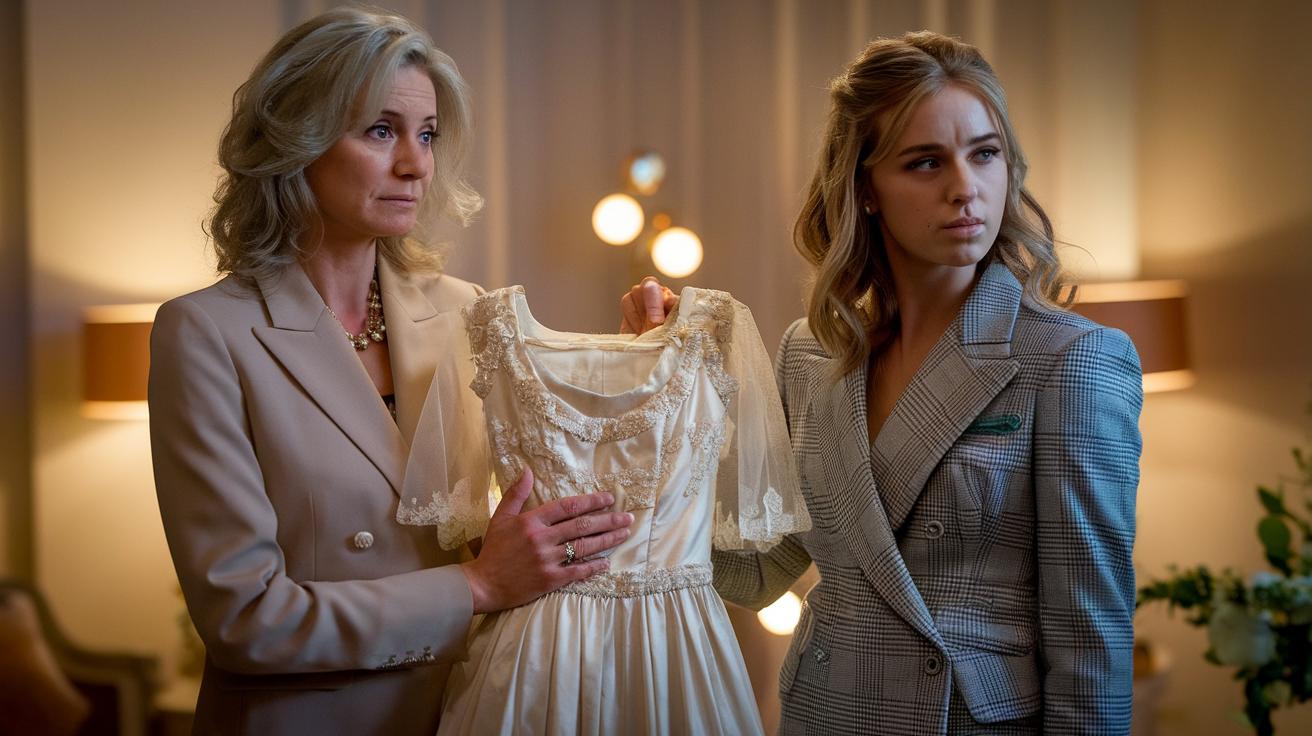
‘AITA for not allowing my daughter to significantly alter my wedding dress?’

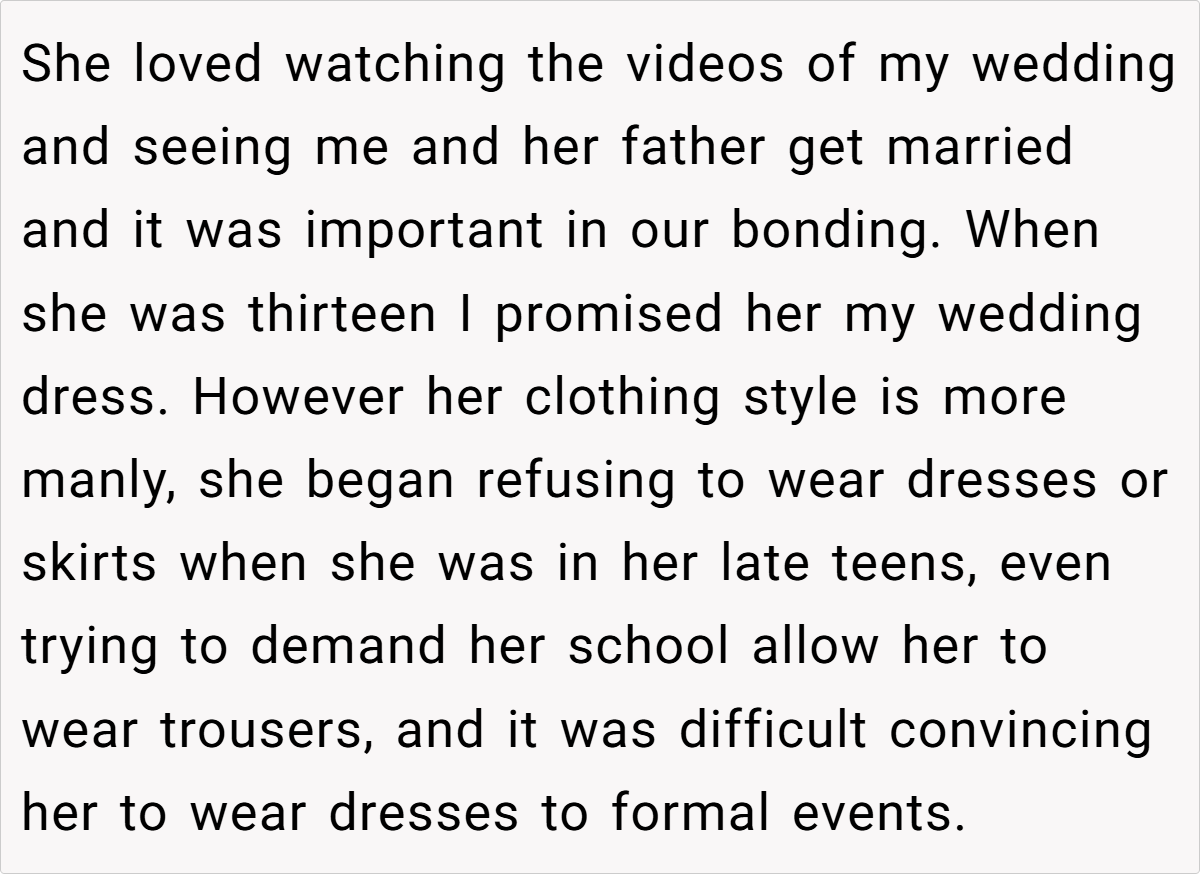


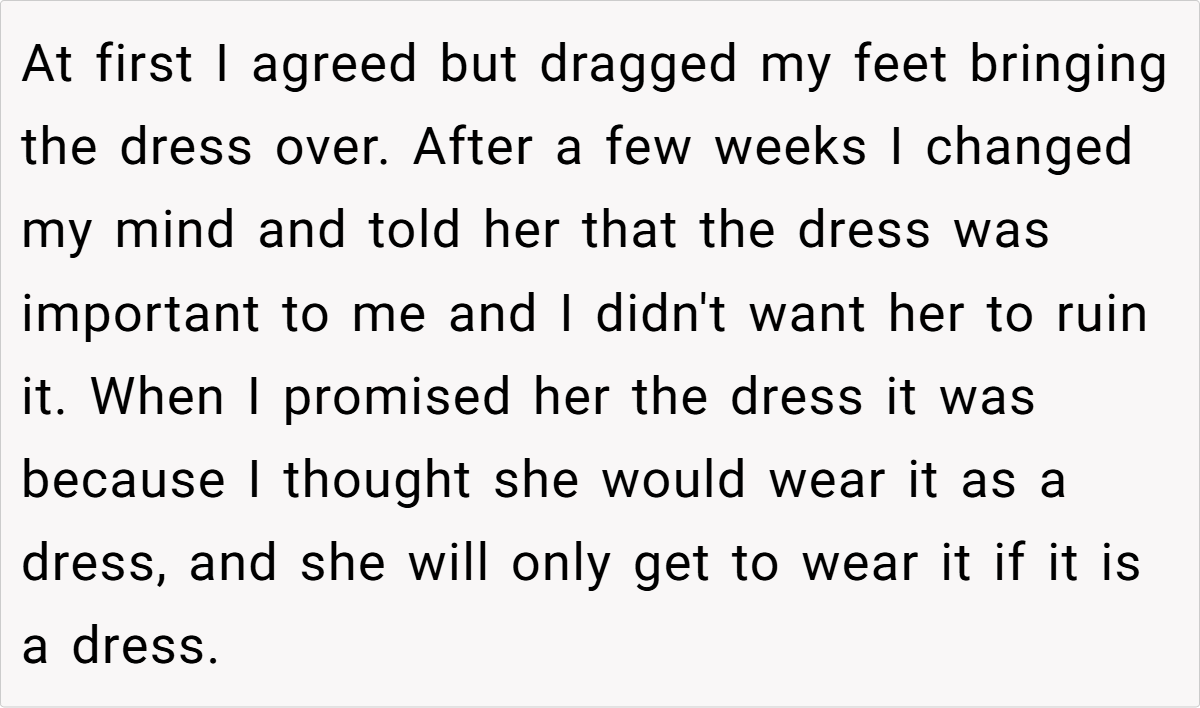
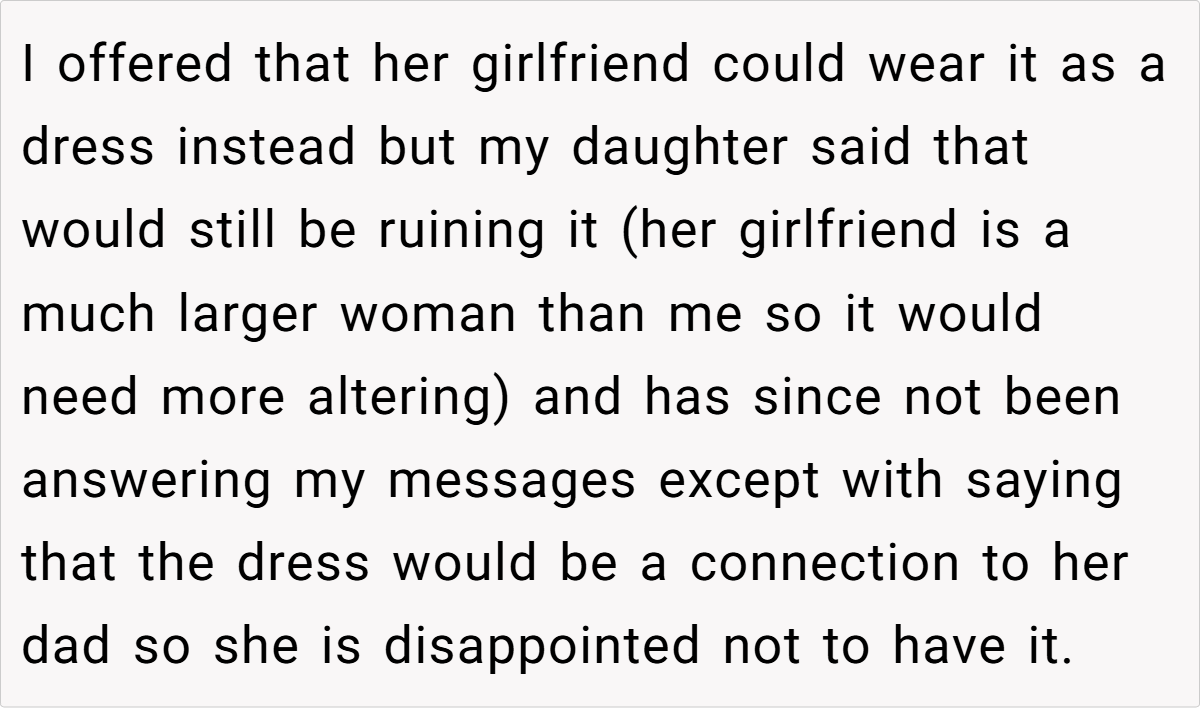
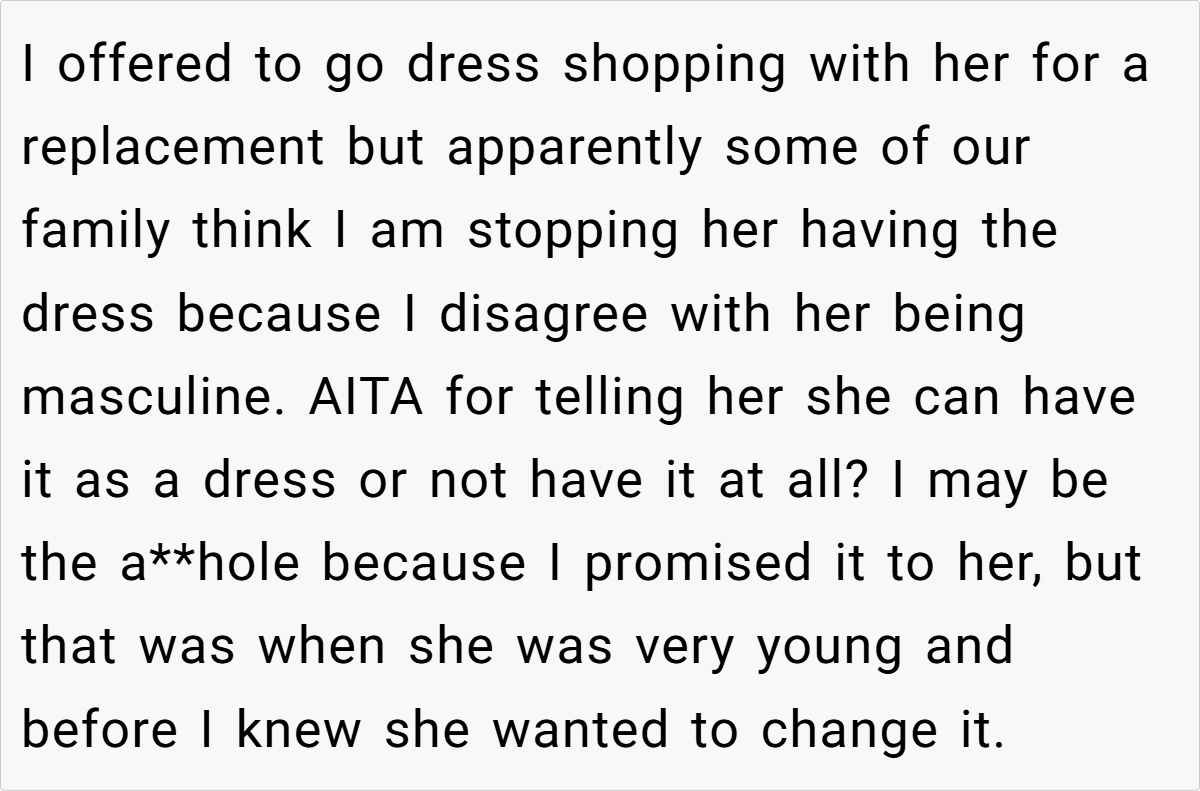
Navigating the collision between tradition and personal identity can be one of the most challenging aspects of family relationships. In this case, the wedding dress represents not only a promise made in childhood but also an emotional link to a lost loved one. Relationship expert Dr. John Gottman reminds us that “strong relationships are built on understanding, empathy, and effective repair attempts when conflicts arise.” This insight is critical here, as both mother and daughter need to feel heard and valued amid their differing visions.
The mother’s decision to maintain the dress in its original form reflects a deep attachment to her memories and the legacy of her late husband. For her, the dress is a tangible reminder of a past filled with love and tradition—a part of her own wedding day that she now wishes to pass on intact. When promises are made in childhood, they often carry a weight that can become even more significant over time. However, the daughter’s evolving self-expression and her desire for a look that aligns with her identity challenge that tradition, leading to a rift between preserving history and embracing change.
On the other hand, the daughter’s request to alter the dress highlights the natural evolution of personal style and the desire to make a statement that feels authentic. It’s not simply a matter of aesthetics; it’s about asserting her individuality in a way that reflects who she has become. In family relationships, balancing the sentimental value of objects with the need for self-expression can be tricky. Experts suggest that open, empathetic communication is key—acknowledging the sentimental importance while also validating the need to evolve can create room for compromise and understanding.
Ultimately, this conflict underscores a broader theme in relationships: the tension between honoring cherished traditions and allowing space for personal growth. Had both parties engaged in a calm dialogue, they might have discovered a creative solution that preserves the dress’s historical significance while subtly incorporating elements that speak to the daughter’s current style. As Dr. Gottman notes, “It’s not about avoiding conflict, but about repairing it in ways that respect both parties’ feelings.” The challenge lies in finding that middle ground where memories and modernity can coexist without one erasing the other.
Update here: Update: AITA for not allowing my daughter to significantly alter my wedding dress?
Here’s the feedback from the Reddit community:
Many redditors argue that while the mother’s attachment to the dress is understandable, the daughter’s desire to express her true self is equally valid. Some believe that family promises should be honored as a symbol of enduring love, whereas others think that flexibility in traditions can strengthen familial bonds. The debate continues on whether preserving a cherished legacy outweighs the need for personal authenticity in today’s evolving world.
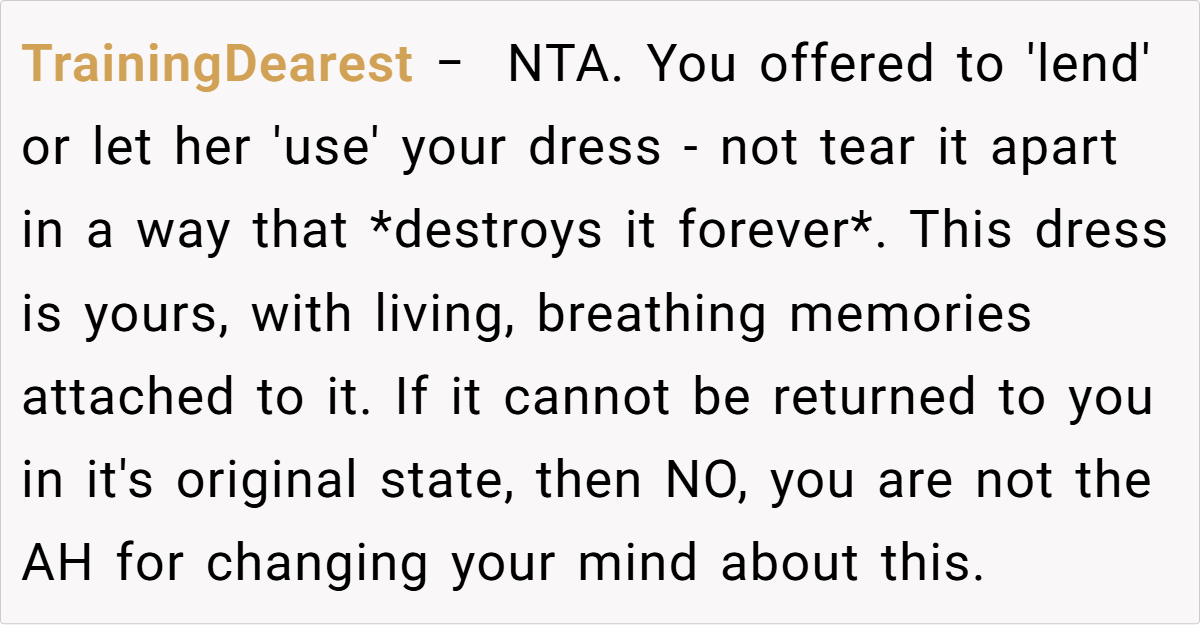
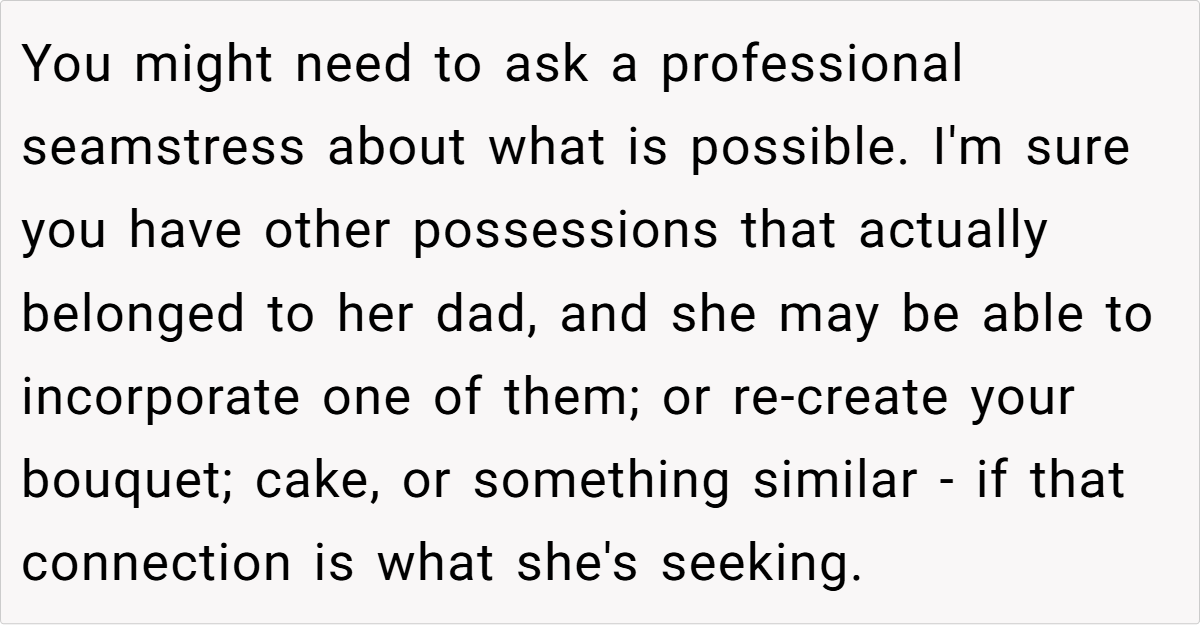
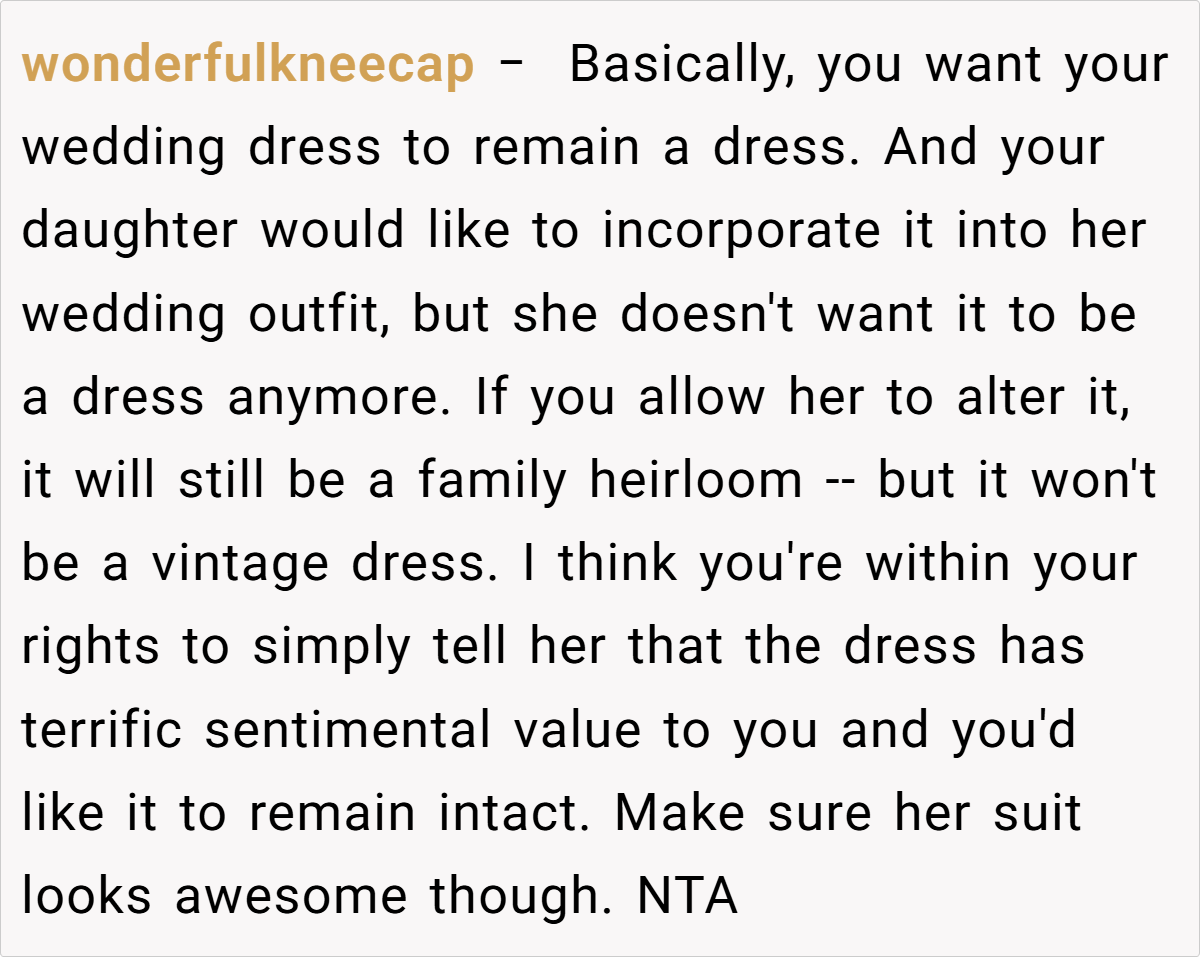


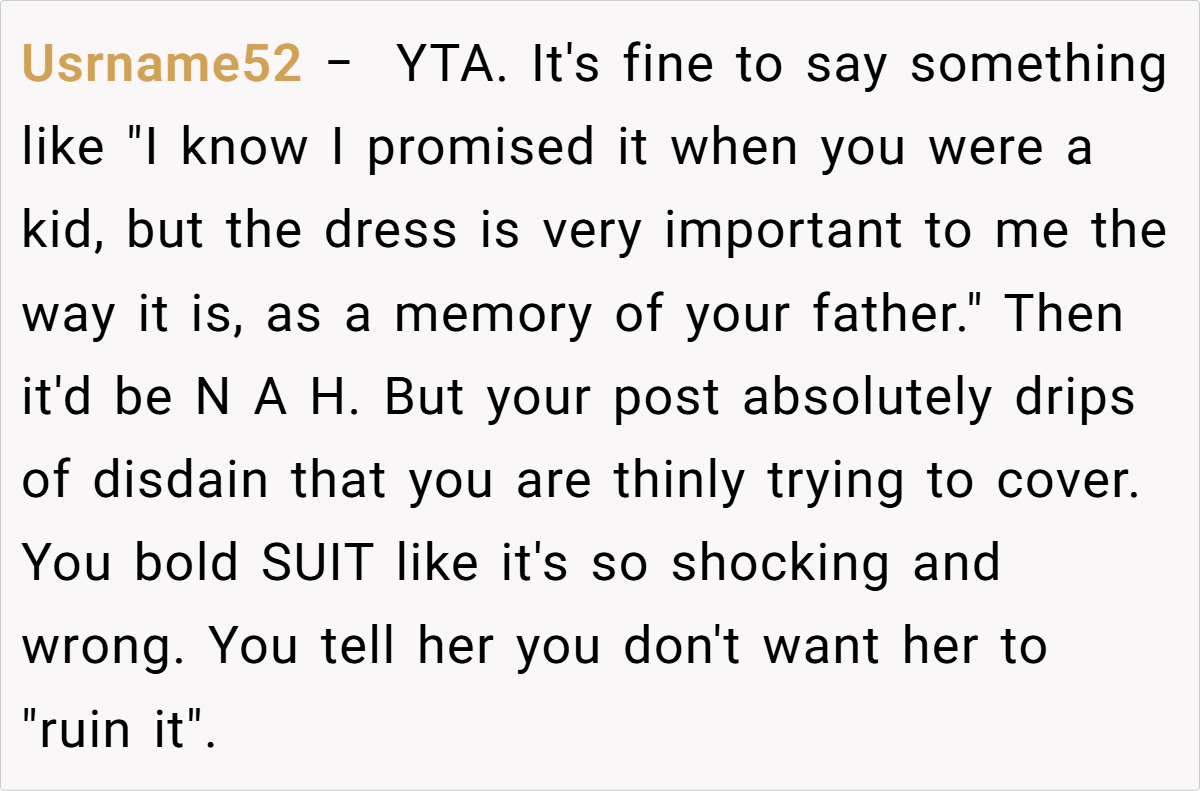
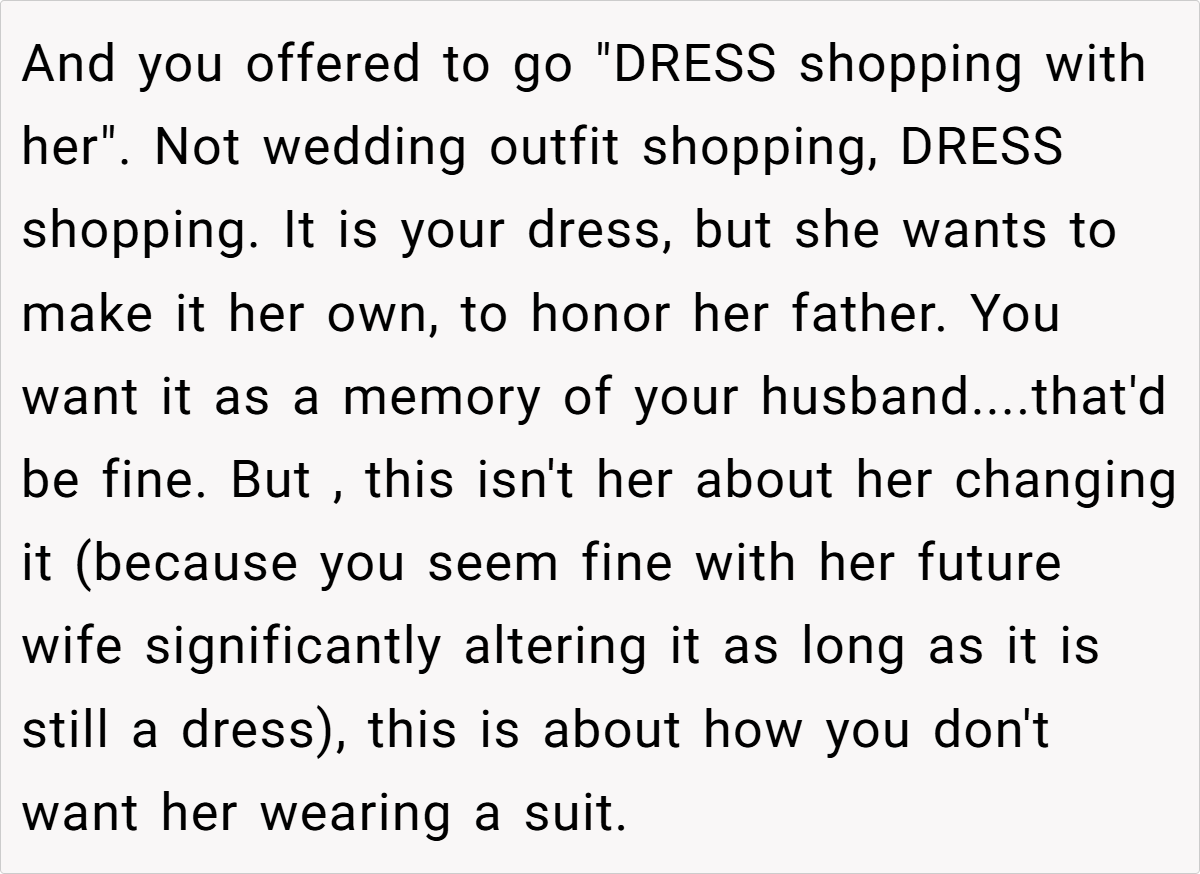
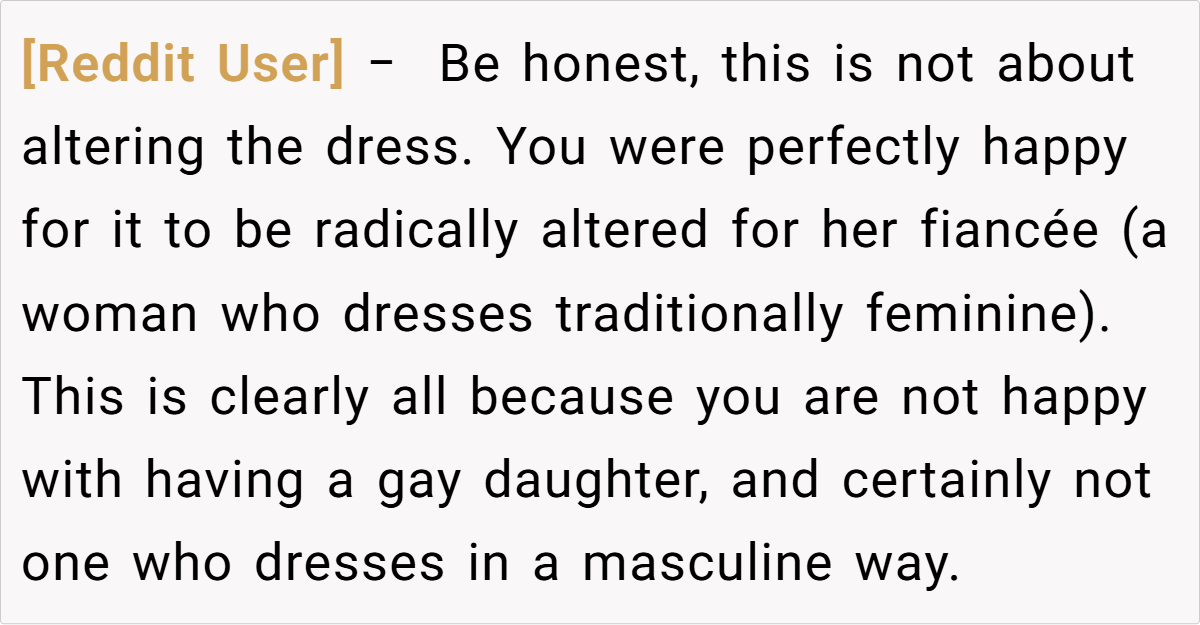


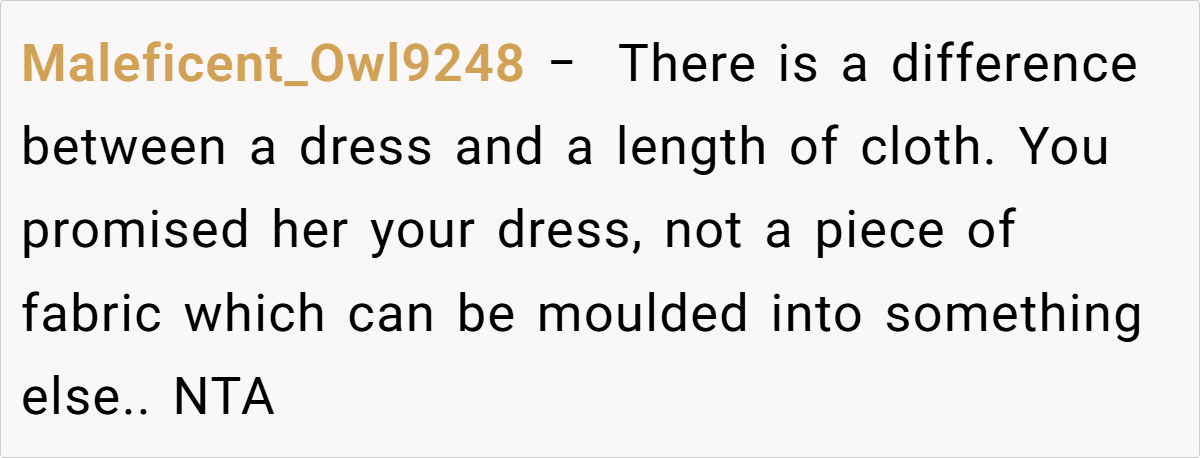
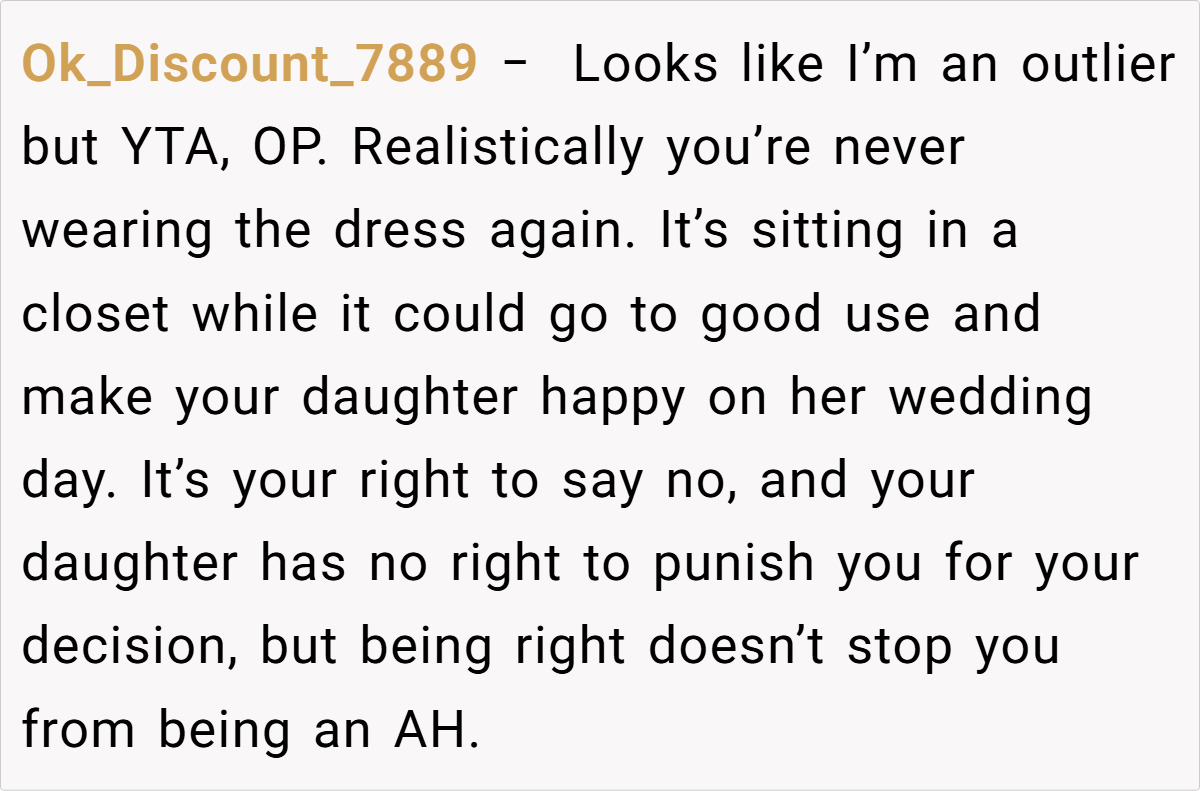

In conclusion, this wedding dress dilemma is more than a simple dispute over fabric and style—it’s a clash between preserving sentimental legacy and embracing personal evolution. How do you balance the desire to honor cherished family traditions with the need to adapt to modern identities? Have you ever faced a similar conflict between old promises and new visions?
Share your thoughts, experiences, and any creative compromises you might suggest. Let’s open up a dialogue about when to hold on and when to let go, and how to mend rifts without losing the essence of what makes our relationships special.

